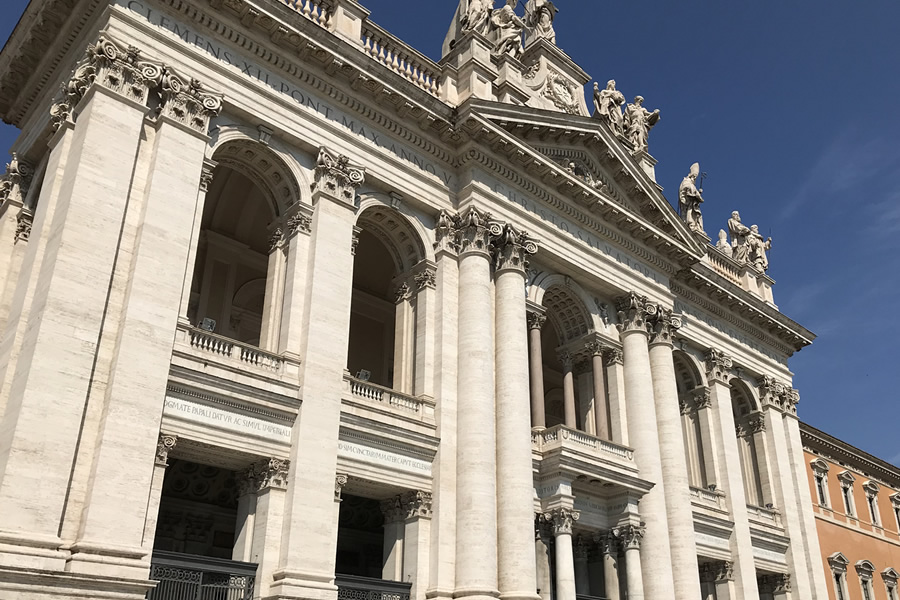
Reflection for the Feast of All Saints Part 1
by Fr. Tony Okolo C.S.Sp., V.F. | 11/09/2025 | Weekly ReflectionBeloved Parishioners,
Last week we celebrated the Solemnity of All Saints, and it is my wish to share a reflection on this great feast of the church. In the 9th article of the Apostle’s Creed, we profess “I believe in the Holy Spirit, the Holy Catholic Church, the Communion of Saint.” It is exactly that Communion of Saints, “Communio Sanctorum” in Latin, that we highlighted last week as we celebrated the Solemnity of All Saints otherwise known as All Hallows.
This feast reminds us that we are a part of a larger communion which connects us to the saints in heaven.
The Communion of Saints in the Mystical body of Christ, the Church, exists in the three states of the Church namely: the Church Militant (ecclesia militens), the Church Penitent (ecclesia poenitens), and the Church Triumphant (ecclesia triumphans). Today, the focus of our celebration is on the Church Triumphant. We celebrate the communion we share with the saints in heaven because for us Catholics, the saints are not dead, but are fully alive in Jesus Christ, who is life itself (John 11:25; 14:6) and the bread of life who bestows life on all who eat his flesh and drink his blood (John 6:35, 48, 51, 53-56). The book of Revelation tells us about the saints worshipping God, singing hymns, playing instruments, making requests to Christ to avenge their martyrdom, and offering prayers for the saints on earth (Rev. 4:10, 5:8, 6:9-11). Because they are alive, we believe that we can go to them to intercede for us with God since CCC 947 rightly teaches that “Since all the faithful form one body, the good of each is communicated to the others…”
We know that heaven is populated by saints who are known to God alone hence on this special feast of All Saints, we celebrate all the known and canonized saints, as well as the unknown saints who could be members of our family, our friends and acquaintances who now share the beatific vision.
The Solemnity has its roots in the earliest days of the Church. Even in the New Testament times, martyrs were honored by the community of believers, beginning with the deacon Saint Stephen, the first martyr. As the first century of the Church unfolded, others began to suffer persecution and death at the hands of Roman emperors, and the Church honored their deaths. In the fourth century, after Christianity was legalized in 313 by Emperor Constantine I, public devotion to the martyrs began to flourish. Their graves became churches and places of pilgrimage and prayer. On May 13, 609, Pope Boniface IV transformed the Pantheon in Rome, a former pagan temple, into a church dedicated to the Blessed Virgin Mary and all martyrs. The annual celebration of its dedication also honored the Blessed Virgin Mary and all martyrs. On November 1, 731, Pope Gregory III dedicated an oratory within Saint Peter’s Basilica to “all saints” that included the Apostles, martyrs, confessors, and all holy men and women throughout the world. This broadened the commemoration of the saints beyond the martyrs to all who lived saintly lives. In 844, Pope Gregory IV extended the November 1st celebration to the entire Church. In 1484, Pope Sixtus IV made November 1st a holy day of obligation for the entire Church and added a vigil day and octave to follow, making the celebration nine days in all. The vigil celebration for All Hallows’ Day was called All Hallows’ Eve, or Halloween. Unfortunately, in many places, Halloween has lost its Christian and saintly focus and has become a secular, and even pagan, celebration.
By instituting this feast, the Church wants us to understand that our fundamental call as Christians is a call to holiness and this call is not restricted to the clergy or consecrated persons, rather it is universal. Lumen Gentium number 40 highlights that “the followers of Christ must hold on to and perfect in their lives that sanctification which they have received from God” and in Matthew 5:48 Jesus admonishes us that we must be holy as our Heavenly Father is holy. In fact, we picked up our appointment letter to a life of holiness on the day we became baptized. It’s a lifelong endeavor but the grace of God is there to assist us. Our generation is not exempted in this call to holiness. We have seen the example of Saint Carlo Acutis who was born in 1991, died in 2006 and was canonized on the 7th of September this year. His example shows us that even in the 21st century, the call to holiness is not outdated. To be concluded next week.
BACK TO LIST